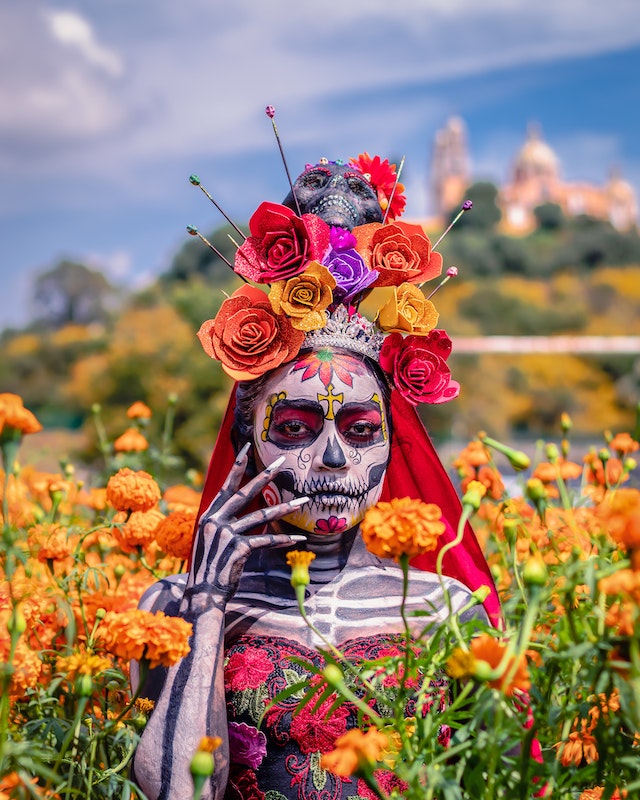South America, a continent of diverse cultures, rich histories, and breathtaking landscapes, is also a place where peculiar and fascinating customs thrive. Strange Customs in South America, born from a fusion of indigenous, African, and European influences, often reflect the unique identity and spirit of the region. In this exploration, we’ll dive into some of the strange and captivating customs that color South America’s cultural tapestry.

La Tomatina – Spain’s Tomato Fight, in South America
Each year, in the small town of Quillacollo, Bolivia, a tomato-based battle known as “La Guerra de Tomates” takes place during the local festival of San Juan. Inspired by Spain’s famous La Tomatina festival, participants pelt each other with ripe tomatoes, creating a sea of red pulp. This strange but exhilarating event draws tourists and locals alike.
El Tío – The Devilish Miners’ Deity:
In the mining regions of Bolivia, especially in Potosí, miners have a unique superstition. They believe in El Tío, a devilish deity who rules over the underworld and the mines. Miners offer cigarettes, coca leaves, and alcohol to appease El Tío, seeking protection and prosperity while working in the treacherous conditions underground.
Baby Jumping Festival
In the Spanish-speaking regions of South America, such as parts of Peru and Ecuador, an unusual and ancient tradition known as “El Colacho” or the Baby Jumping Festival is celebrated. Men dressed as devils jump over rows of babies lying on the street, symbolizing the cleansing of original sin. This custom has raised eyebrows and questions about its safety but remains an intriguing cultural practice.
The “Witches’ Market” in La Paz
In La Paz, Bolivia, there is a market known as “El Mercado de las Brujas” or the Witches’ Market. Here, you can find stalls selling a curious mix of items, including herbs, potions, dried llama fetuses, and other mystical products used for traditional rituals and ceremonies. It’s a glimpse into the continued practice of indigenous Andean spiritualism.
Día de los Ñatitas – The Festival of the Skulls
In La Paz, Bolivia, there’s a unique festival known as Día de los Ñatitas or the Day of the Skulls. During this event, individuals bring human skulls, often those of deceased family members, to be decorated, dressed, and paraded through the streets. This tradition reflects a blend of indigenous beliefs and Catholicism.
Yerba Mate
While not inherently strange, the South American custom of drinking yerba mate is certainly unique to the region. Yerba mate is a type of tea made from the leaves of the mate plant and is traditionally sipped from a shared gourd using a metal straw called a bombilla. This communal and centuries-old practice is deeply ingrained in the culture of Argentina, Uruguay, Paraguay, and parts of Brazil.
The Festival of the Virgin of Candelaria
In Puno, Peru, the Festival of the Virgin of Candelaria is celebrated with elaborate parades featuring vibrant costumes, traditional dances, and processions. What makes this festival particularly intriguing is the incorporation of pre-Columbian indigenous elements into Catholic rituals, showcasing the blending of cultures in South America.
Dia de los Muertos – Day of the Dead
Although not exclusive to South America, the region has its unique celebrations of Dia de los Muertos, or Day of the Dead. Families in countries like Mexico, Ecuador, and Bolivia honor deceased loved ones by creating intricate altars, decorating graves, and offering food and gifts to the spirits. It’s a beautiful and reverent tradition that celebrates the continuity of life and death.
These unusual customs offer a glimpse into the colorful and diverse cultures of South America. While they may seem strange or unfamiliar to outsiders, they reflect the region’s rich history, the blending of cultural influences, and the resilience of tradition in the face of modernization. Exploring these customs can provide a deeper understanding of the vibrant tapestry of Strange Customs in South America.